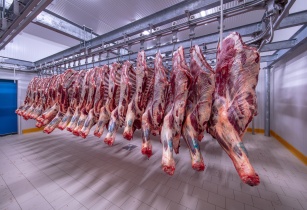Studies have proven that some infectious diseases that plague Nigerians, can be traced to the unhygienic methods of processing meat at abattoirs, with very little attention being paid by concerned government agencies, and sundry stakeholders
One of the major challenges present in almost all abattoirs is non-adherence to standard rules of meat processing, especially in the area of sanitation, slaughtering facilities, handling and movements, which fall short of the stipulated meat processing standards.
According to The Guardian, majority of Nigerians do not care about the source of the meat that they purchase in markets, neither do they worry about the cooked meat, which they buy in the cafeteria. When set standards are not met in the meat processing process, it results in the penetration of zoonoses into homes.
A visit to the Oko Oba Abattoir and Lairage Complex, Agege, adjudged the largest in Lagos State, revealed that a groundswell of unwholesome practices is going on there unabatedly.
Contrary to the standard rule of ensuring that all animals meant to be slaughtered must be inspected and certified fit for human consumption, The Guardian confirmed that none of those brought-in and slaughtered at the time of the visit were inspected before and after slaughter, despite the presence of a veterinary doctor stationed at the facility.
It was also observed that the meat processing, sanitation arrangements, slaughtering facilities, handling and movement of the meat all fell short of the stipulated meat-processing standards.
Even though the Oko Oba Abattoir has, of late, experienced some kind of improvement in terms of hygiene, the situation is still far from what it should be. The part of the facility where live animals are kept is a bit neat, but the opposite side where butchers are selling stinks and is very untidy. At another slaughterhouse located in the Ketu area of the state (along Ikorodu road), The Guardian observed that chunks of meat are processed with dirty, stagnant water.
Apart from the fact that the animals are not inspected by experts before, and after they are slaughtered, tonnes of odds and ends from the slaughtered animals litter the entire area. The stench emanating from this mounting waste, coupled with the ugly sight speaks volumes of the unhealthy atmosphere.
Stakeholders are worried that this high level of negligence could trigger the outbreak of a zoonotic disease or more at a time that such was unexpected.
Zoonotic diseases
Infectious disease outbreaks such as bovine tuberculosis, brucellosis, cysticercosis and other diseases that can be transmitted from animals to humans are frequent occurrences in the country, but not usually reported in an outbreak fashion, are traceable to meat consumed in-country.
According to the World Health Organization (WHO), emerging and endemic zoonotic diseases pose a threat not only to the health of animals and humans but also to global health security.
